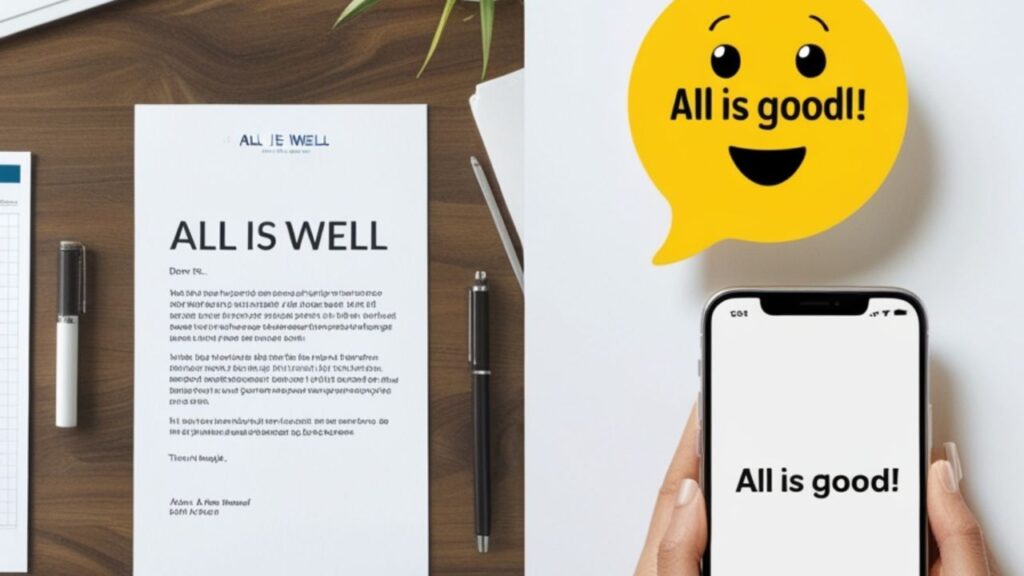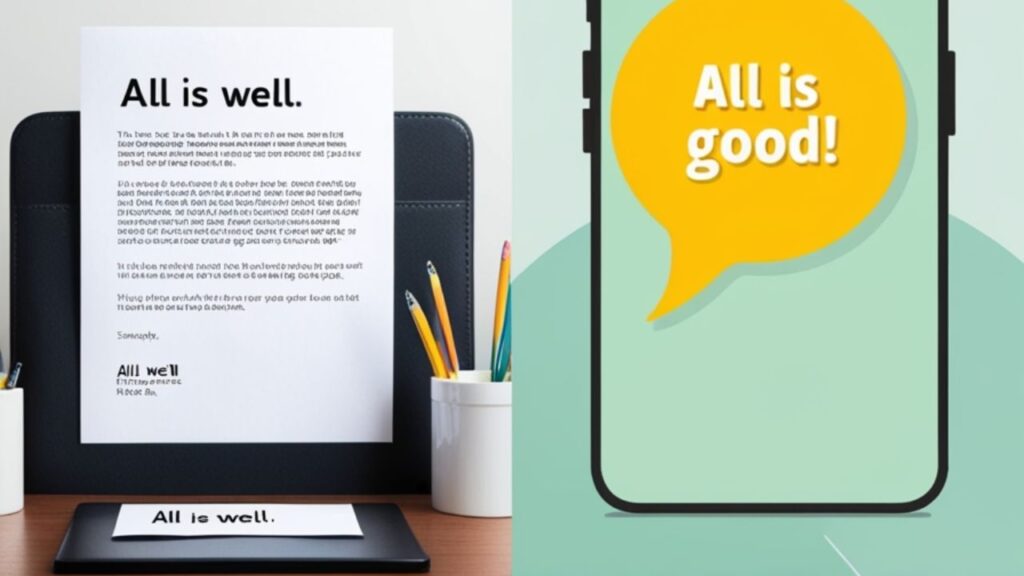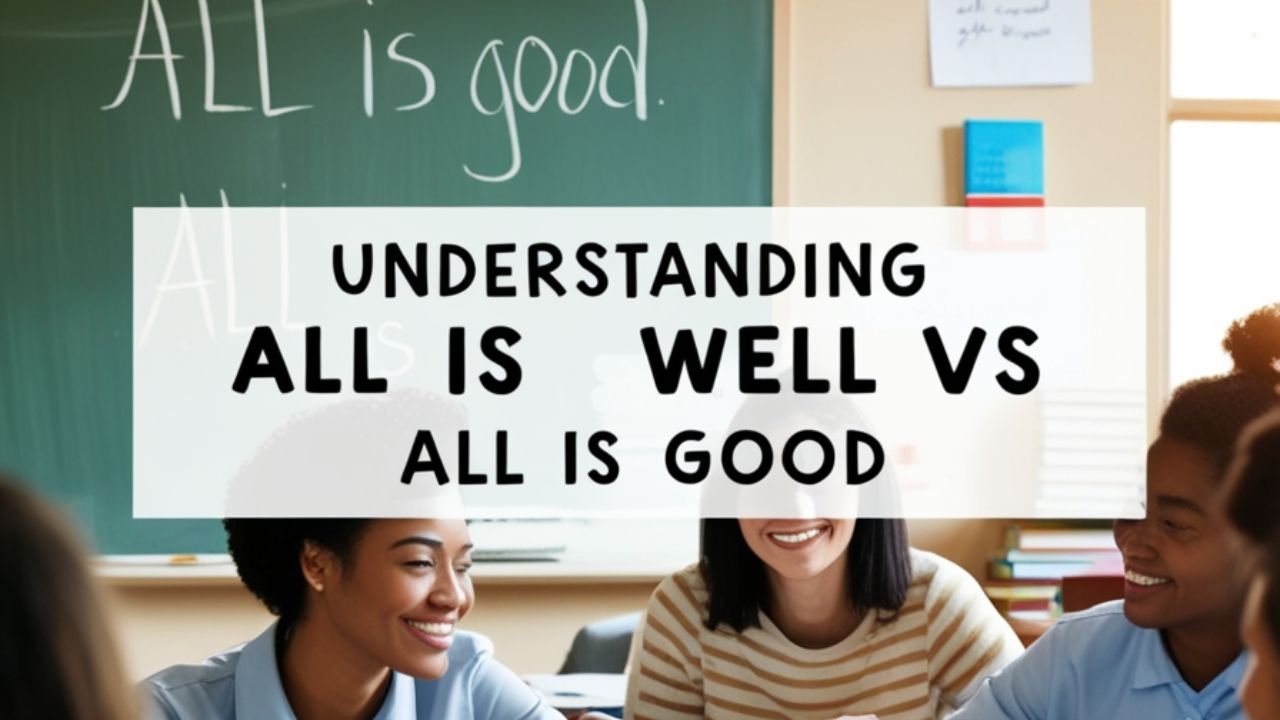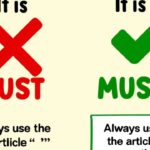All is well sounds calm and proper in English. People use it when they want to show that everything is peaceful and fine. This phrase follows grammar rules correctly and appears often in books, letters, and polite talk. It gives a gentle, confident feeling.
All is good feels friendly and modern. People say it while chatting with friends or posting online. It shows happiness and comfort in a simple way. Even though it’s not the formal choice, many people understand it and use it often in daily life.
Choosing between All is well and All is good depends on where you speak. Use the first one in formal or serious moments. The second fits when talking casually. Both mean things are fine, only the tone changes slightly.
Understanding Why “All Is Well” vs “All Is Good” Confuses People
Many learners mix All is well and All is good because both talk about feeling fine. The words seem the same, but they have small differences. One sounds proper and old-fashioned, while the other feels simple and friendly for daily talk.
This mix-up happens because English changes with time. People speak in easier ways now. All is good became common in casual talk, while All is well stayed in books and formal writing. Both sound right when used in the right place.
- Similar Meaning: Both All is well and All is good talk about things being fine, so learners think they mean the same. The small grammar difference often goes unnoticed.
- Changing Language: English keeps evolving. People use All is good more in modern and casual speech, which adds to the mix-up.
- Different Situations: All is well fits formal talks, while All is good suits friendly chats. Many learners feel confused about when to use each.
The Core Grammar Rule: Why “All Is Well” Is Traditionally Correct
The phrase All is well follows an old grammar rule in English. The word “well” works as a describing word after “is.” It tells about a state or condition. This form sounds neat, correct, and accepted in formal speaking or writing.
When people use All is good, they change the rule slightly. The word “good” usually describes things, not conditions. Still, many people say it because it feels natural in daily life. It shows how language grows and becomes easier.
| Component | Example |
| Subject | All |
| Linking Verb | is |
| Subject Complement | well/good |
Breaking Down “All Is Well”: Grammar, Structure, and Tradition
The phrase “All is well” has deep roots in traditional English and has long been used in literature, historical documents, and formal speech. It reflects not just grammar but also tone.
See also : Currently or Currenty – Correct Spelling Explained Simply
Examples of Classic Usage:
- Literature Example: Writers like Shakespeare used All is well in stories and plays to show peace or a happy ending.
- Historical Example: Old letters often said All is well to tell family that everything was safe and calm.
- Official Example: Soldiers or workers reported All is well to show that duties or tasks were completed properly.
What “All Is Good” Means in Modern Conversations

- Casual Talk: People say All is good when chatting with friends to show that everything feels fine or normal.
- Modern Style: It sounds relaxed and friendly, fitting well in daily talks, texts, and social media posts.
- Positive Tone: The phrase All is good spreads happiness and comfort, showing that life or a situation feels easy and cheerful.
Why It’s Used:
- Simple Sound: People use All is good because it’s short, easy, and feels natural in speech.
- Friendly Feel: It creates a warm and cheerful mood, perfect for casual talks or friendly messages.
- Modern English: The phrase shows how language changes, as speakers prefer easy words that sound relaxed and positive.
The Subtle Difference Between “Well” and “Good”
- Meaning: The word well describes health or condition, while good talks about quality or moral value.
- Grammar Use: Well follows linking verbs like “is” to show how something feels, but good describes what something is.
- Tone: Well sounds calm and formal, while good feels friendly and modern in daily speech.
Quick Test:
A quick check helps to see the right form. Try saying All is well when something feels peaceful or safe. It sounds smooth and correct. This phrase fits nicely when you talk about comfort, calm moments, or proper situations.
Use All is good in friendly talk or fun messages. It sounds cheerful and easy. The short phrase shows that everything feels fine. Both choices make sense, but one fits formal words while the other fits daily talk.
- Formal Use: Say All is well when you want to sound proper or polite in writing or serious talks.
- Casual Use: Use All is good when speaking with friends or sharing relaxed, happy moments.
- Easy Check: If the talk feels formal, choose well. If it feels light and friendly, choose good.
Context is Everything: When to Use Each Phrase
Choosing between the two depends on where and how you’re speaking or writing.
When “All Is Well” Works Best:
- Formal Writing: Use All is well in emails, reports, or letters where respect and clarity matter.
- Serious Settings: It fits business meetings, school work, or polite talks where you need a calm tone.
- Reassuring Moments: Say All is well to comfort someone or show that everything is peaceful and safe.
When “All Is Good” Feels Natural:
- Friendly Chats: Use All is good when talking with friends or family in a relaxed and happy way.
- Casual Writing: It fits messages, texts, or social media posts where the mood is light and easy.
- Positive Vibe: Say All is good to share joy, comfort, or good feelings in simple everyday talk.
Tone, Audience, and Emotion: What These Phrases Convey
The phrase All is well sounds calm and polite. It gives a sense of peace and care. People use it when they want to speak softly or show respect. It fits nicely in formal talk, writing, or serious moments.
The phrase All is good feels light and happy. It brings warmth and cheer to the message. People use it with friends or in simple talks. It shows joy and comfort, making the mood friendly and relaxed.
| Phrase | Tone | Implied Emotion |
| All is well | Formal, calm | Reassurance, order |
| All is good | Casual, upbeat | Positivity, light-heartedness |
How the English Language is Changing
Languages evolve, and English is no exception.
See also : When to Use Concurrent vs Simultaneous in Writing
Linguistic Evolution in Action:
Language keeps changing with time, and All is well shows that growth. Long ago, people used it in letters, prayers, and books. Now, new ways of speaking appear. English grows softer and easier, helping everyone share thoughts clearly and simply.
The phrase All is good became common in friendly talk. It shows how people shape words to match feelings. Modern English accepts such small changes. These changes make the language rich, lively, and close to everyday speaking.
- Language Change: English keeps growing, and phrases like All is good show how people make speech simpler over time.
- Cultural Influence: Movies, music, and daily talk help new forms spread faster among speakers.
- Modern Acceptance: Today, both All is well and All is good sound natural because English welcomes change and flexibility.
Better Alternatives to Both Phrases
| Alternative Phrase | Formality Level | Context Suggestion |
| Everything’s fine | Neutral | Universal |
| Things are looking good | Casual | Projects, plans |
| No worries | Informal | Texts, chats |
| Everything is in order | Formal | Business, legal |
| It’s all under control | Neutral | Reassurance, leadership |
Global English and Native Speaker Preferences

- American English: Speakers often use All is good in friendly talks and informal messages across the United States and Canada.
- British English: People prefer All is well because it sounds more traditional and polite in formal speech.
- Other Regions: Countries like Australia, New Zealand, and India use both phrases, choosing based on culture, comfort, and tone.
What Grammar Experts Say
- Grammar Guides: Experts agree that All is well follows traditional English rules and fits formal or careful writing.
- Modern View: Many linguists accept All is good in casual speech since language changes with time.
- Main Advice: Teachers and writers suggest choosing the phrase that matches your tone, audience, and purpose best.
What Should You Say? Final Verdict
| Use Case | Preferred Phrase |
| Formal writing/speaking | All is well |
| Casual conversation | All is good |
| International or mixed audience | All is well (safe bet) |
| When in doubt | Everything’s fine |
Real-Life Use Case Examples
Email to a Manager:
“Hi Sarah, just checking in to confirm all is well with the onboarding process.”
Text Message to a Friend:
“Don’t worry about it, bro. All is good.”
Business Report:
“All is well across departments following the restructuring.”
Instagram Caption:
“Beach day vibes. All is good 
Conclusion
The phrase All is well stays strong in formal English. It gives a calm and neat meaning. People choose it when they want to sound respectful and sure. It remains a timeless way to express peace and comfort.
The phrase All is good brings a modern and happy tone. It fits simple talks and friendly words. Both forms work well in different places. Understanding when to use each makes speaking and writing sound clear and confident.
FAQs
Which is correct, well or good?
Use “good” for nouns and “well” for verbs or health; example: “She sings well,” “She’s a good singer.”
What is correct, all is well or all is good?
Both are correct, but “all is well” sounds more formal and traditional.
What does all is well and good mean?
It means everything seems fine but may have hidden issues or limitations.
What does it mean to say “all is well”?
It means everything is okay, peaceful, or functioning properly without problems.

Join Bibcia on a journey to master English grammar. Discover easy lessons, writing tips, and practical examples designed to make learning grammar simple and effective.











